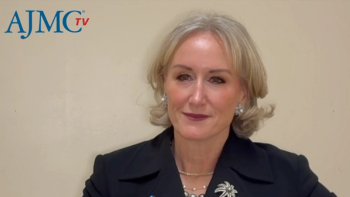
The American Journal of Managed Care
- May 2025
- Volume 31
- Issue 5
- Pages: 233-239
Unmet Health Care and Health-Related Social Needs of Laundromat Users
Key Takeaways
Laundromats offer a promising outreach setting for Medicaid payers because Medicaid enrollees represent a majority of laundromat users and have disproportionately high levels of unmet needs.
ABSTRACT
Objectives: To estimate the prevalence of unmet health care and health-related social needs (HRSNs) among laundromat users and examine differences by health insurance coverage.
Study Design: Cross-sectional observational study.
Methods: We collected a survey from participants in a pilot intervention conducted in 14 Pennsylvania laundromats between September and December 2023. The measures included health insurance coverage, unmet health care needs, and unmet HRSNs. Descriptive analyses and linear probability regression models with laundromat fixed effects were used to estimate the overall prevalence of unmet needs and explore subgroup differences.
Results: Among the 1995 sample members, approximately half (52.9%) had Medicaid coverage, 21.7% had private coverage, 14.5% were uninsured, 5.4% had Medicare, and 5.5% were dually enrolled in Medicare and Medicaid. The prevalence of having any unmet HRSN was higher than having any unmet health care need (54.3% vs 12.3%). Across unmet need measures, Medicaid sample members had 1.5 to 5 times higher levels relative to the privately insured. Differences by insurance coverage remained in fixed-effects analyses that limited comparisons to laundromat users at the same location.
Conclusions: Laundromat-based outreach is likely most promising for Medicaid-serving stakeholders because Medicaid enrollees are disproportionately represented among laundromat users and have disproportionately high levels of unmet needs.
Am J Manag Care. 2025;31(5):233-239.
Takeaway Points
This is the largest examination to date of the insurance coverage and unmet health care needs of laundromat users, and it is the first assessment of unmet health-related social needs (HRSNs) for this population.
- The prevalence of unmet HRSNs among laundromat users is higher than the prevalence of unmet health care needs.
- Slightly more than half of laundromat users have Medicaid.
- Laundromat users with Medicaid have the highest levels of both unmet health care needs and HRSNs. These differences by insurance coverage persist even when limiting comparisons to individuals using the same laundromat.
- Our findings suggest that laundromat-based outreach is particularly promising for Medicaid payers.
Community outreach programs are valuable for identifying people with unmet health, transportation, and food security needs.1,2 Although successful initiatives involving church-based and barbershop health promotion programs have been documented, many eligible individuals remain unenrolled in health care and social service benefits to which they are entitled.3
In this article we consider a novel outreach setting: laundromats. Laundromats are opportune locations for connecting individuals to health care and social services. Although little scientific data exist about laundromats and their users, a few widely circulated industry estimates are instructive. There are approximately 35,000 laundromats across the US disproportionately serving low-income individuals who are renters.4 Women comprise 60% of laundromat users, and an estimated 87% of customers live within 1 mile of the building.4 Laundromat visits happen at repeated intervals and last for hours, providing ample opportunity for engagement. The cadence and length of stay are in sharp contrast to, for example, ad hoc primary care visits that average 18 minutes each.5
Previous laundromat initiatives have targeted childhood literacy, and a few qualitative studies document efforts to provide health education about cancer and reproductive health in laundromat facilities.6-9 These studies provide initial reassurance about feasibility and acceptability of laundromat outreach. However, important concerns remain. A lack of trust in the health care system may be a critical barrier in communities served by laundromats.10 Distrust could spill over toward laundromat-based outreach workers who are working on behalf of health care providers and insurers. Moreover, laundromats are public spaces, so individuals may feel insufficiently reassured about privacy protections.
In late 2023, community health organization Fabric Health designed a pilot program for 14 laundromats in Pennsylvania to see whether these barriers could be successfully addressed. Building trust was a cornerstone of the effort, with outreach workers hired for empathy and the ability to form authentic connections with community members.11,12 Outreach workers provided laundromat users with health insurance application assistance, health care coordination (eg, finding an in-network provider), and public benefits navigation (eg, applying for food stamps).11,12 Notably, the work happened against the backdrop of the Medicaid unwinding, when eligibility redetermination requirements were reinstated after COVID-19 pandemic–era freezes. As such, a key part of the intervention was to help people maintain Medicaid coverage. Although no formal program evaluation was undertaken, enthusiasm and engagement among laundromat users and outreach workers were sufficiently high that Fabric Health has scaled the effort, including expansion into a new state.
As part of the pilot, Fabric Health collected a survey to understand the target population’s unmet health care needs and health-related social needs (HRSNs). This is one of very few health-related surveys sampling laundromat users. An innovative descriptive study collected extensive health status data for 193 laundromat clients in San Antonio, Texas, and found that they had higher levels of poor health and lower health care attachment relative to citywide estimates.13 An earlier study found that among a sample of 1100 urban residents surveyed at hair salons, grocery stores, and laundromats, there was considerable confusion about the definition of managed care coverage as well as its associated policies and practices.14 The current survey is the largest laundromat-specific sample collected to date, with a sample size approximately 10 times larger than the San Antonio data. To our knowledge, it is also the first survey to measure unmet HRSNs among laundromat users and the first to explore subgroup differences within this population.
The goals of this study were to estimate the prevalence of unmet health care and HRSNs among laundromat users and to identify any subgroup differences by insurance status. These estimates can help inform future efforts, indicating for whom laundromat outreach might be most valuable and which types of needs are most pressing to address.
METHODS
We conducted a cross-sectional study using survey data stored in Fabric Health’s administrative system. The data were collected between September and December 2023. The sample included 1995 adult clients of 14 laundromats in Philadelphia and Pittsburgh.
Data Collection Procedure
Fabric Health outreach workers approached a convenience sample to complete a screener about health insurance coverage, health care appointment needs, and HRSNs. Although they did not formally document response rates, Fabric Health’s team reported a general willingness among community members to engage with outreach workers. Respondents reported their answers to the outreach workers, who entered the answers into a laptop. Respondents were not offered financial incentives for answering the screener, but as part of the broader pilot effort, they were eligible for assistance from the outreach workers, as described earlier. The sample was limited to initial encounters by the Fabric Health team and did not include individuals previously connected to Fabric Health services and staff.
Screener Items
The screener began with fields on name, phone number, and age, with an optional address field. It subsequently collected information about insurance coverage, offering respondents the ability to select multiple insurance types. The screener provided a detailed list of insurance plans using the specific names of public health insurance programs and private plans. It also incorporated plain-language prompts as a response aid (eg, describing the “red, white, and blue card” associated with Medicare). A screenshot of the insurance coverage item and further detail are provided in eAppendix 1 (
Following the insurance fields, the screener asked about 3 HRSNs and 2 health care questions. The HRSNs included having concerns about utilities being shut off, lacking sufficient food, and lacking internet access at home. The health care questions asked about transportation barriers preventing individuals from going to the doctor and whether individuals needed help making a health care appointment. These 5 unmet need measures were collectively identified by Fabric Health staff as the most prevalent among the target population. Fabric Health staff deliberately chose needs that they could immediately help address, in contrast to gaps that their efforts could not immediately impact (eg, housing). The eAppendix displays screenshots of the 5 items (eAppendix 2) and describes the coding of these responses into series of dummy variables.
Data capture and storage infrastructure were Health Insurance Portability and Accountability Act compliant, and the screener displayed a compliance logo on the user interface. The study was undertaken as a quality improvement activity for Fabric Health and was therefore exempt from human subjects review.
American Community Survey
We sourced zip code–level data to characterize the area-level sociodemographic composition of sample laundromat locations. Area-level sociodemographic measures drive laundromat location decisions and by extension can inform laundromat outreach targeting.15 Moreover, area-level characteristics can offer potential clues about how well our estimates generalize to new contexts. We extracted the most recently available 5-year data from the American Community Survey, covering the years 2018-2022, and presented zip code–level estimates from the sociodemographic overview table (Table S0601: Selected Characteristics of the Total and Native Populations in the United States).16 Each sample laundromat resided in a separate zip code, so there was no overlap within zip codes. To protect laundromat anonymity, we did not report specific zip code locations. For ease of display, we presented area-level information for the 3 laundromats with the largest sample counts in Philadelphia and in Pittsburgh. More than two-thirds of the analytic sample was drawn from these 6 laundromat sites. Area-level information on the other 8 laundromats is available upon request. A complete list of sample size counts by laundromat is displayed in eAppendix 3.
Statistical Analyses
Our outcomes included dummy variables reflecting the 5 unmet need measures described above. The key independent variable was insurance status, categorized as follows: uninsured, Medicaid (only), Medicare (only), dual enrolled (Medicaid and Medicare), and private coverage. TRICARE and Marketplace coverage were both coded as private coverage.
We calculated univariate statistics about age, insurance coverage, and need outcomes for the analytic sample, stratified by city. We subsequently estimated multivariate regression models exploring potential differences in unmet needs across insurance types. These models included a linear age covariate, a city dummy (reference: Philadelphia), month dummies (reference: September), and laundromat dummies. The addition of laundromat dummies introduced a laundromat fixed-effects design. This design facilitates within-laundromat comparisons, eliminating confounding arising from insurance composition differences across laundromats. If, for example, the highest-volume laundromats in our sample had both unusually high rates of private insurance coverage and unusually high rates of utilities need, we might mistakenly infer that private coverage was positively correlated with utilities need, when in fact the association was an artifact of geography. Making within-laundromat comparisons alleviates any such concern. We estimated linear probability models for interpretive ease. We presented the regression estimates as predicted probabilities, which were computed using the recycled probability method. Namely, for a given outcome measure, we computed 5 predicted probabilities for each sample member, corresponding to each of the insurance categories. Predicted probabilities were calculated using the estimated regression coefficients at the actual levels of all independent variables, varying only the insurance dummies. We subsequently aggregated the individual predicted probabilities up to the mean level by insurance category.
RESULTS
Thirty-two percent of the sample reported a food need, with higher rates reported in Philadelphia (33% vs 28% in Pittsburgh). One-quarter of the sample reported utilities need, with higher rates reported in Pittsburgh (30% vs 25% in Philadelphia). Twenty-eight percent of Pittsburgh sample members lacked internet access at home compared with 19% in Philadelphia. Health care needs were considerably less prevalent than HRSNs, with 5% of sample members reporting an appointment need (4% in Pittsburgh and 6% in Philadelphia) and 9% reporting a transportation need (11% in Pittsburgh and 7% in Philadelphia).
We performed sensitivity analyses stratifying the sample by higher- vs lower-income zip codes to speak to the area-level variability in laundromat locations (results displayed in eAppendix 5). Specifically, we split the sample at the median zip code–level poverty rate (15%) and computed descriptive statistics on insurance coverage and unmet need outcomes. Although levels of private coverage and Medicaid were different across the 2 strata (27% and 46%, respectively, in lower-poverty zip codes vs 17% and 59%, respectively, in higher-poverty zip codes), Medicaid remained the most prevalent coverage type across both. The relative prevalence of no coverage, Medicare, and dual coverage was comparable. Importantly, the overall level of unmet needs was similar across higher- and lower-poverty areas, as was the relative distribution of need by insurance type.
DISCUSSION
To our knowledge, this study is the largest examination to date of the unmet health care needs of laundromat users, the first to measure unmet HRSNs for this population and the first to explore differences by subgroups. We found that Medicaid was the primary payer for laundromat users, covering approximately half of sample members. We found that unmet HRSNs were more common than unmet health care needs and that food concerns were the most prevalent unmet need (32% of the sample). For 4 of the 5 outcome measures, a Medicaid population (either Medicaid-only or dual Medicaid-Medicare enrollee) had the highest prevalence of unmet need.
Laundromat outreach has the potential to reach Medicaid populations not currently served by traditional care coordination efforts, which often focus on chronically ill individuals.17 Instead, laundromat outreach is likely most promising for younger, healthier Medicaid populations for whom the most relevant health care needs are obtaining and maintaining coverage and accessing primary care. These populations might be cost-effectively served using technology-enabled solutions, such as strategic placement of QR codes on promotional posters in laundromats and/or SMS texting by laundromat-based outreach workers.
The key levers for achieving a compelling return on investment from a payer perspective are increasing enrollments and reenrollments and improving quality measure performance. Examples of the latter include breast and cervical cancer screening, depression screening, and well-child visits.18,19 Health plans might also benefit from improvements in member satisfaction scores (eg, Consumer Assessment of Healthcare Providers and Systems scores).20 Laundromat outreach may also be useful in supporting primary care payment reforms, including patient-centered medical homes, primary care case management, and accountable care organizations.21 That said, Fabric Health staff reported that many sample members lived with household members with relatively greater health care needs, so adopting a household-level strategy might bolster the business case for more traditional care coordination efforts as well.
Additionally, over the past decade, CMS and state Medicaid agencies have dramatically increased reimbursement opportunities for payers to address members’ HRSNs. Related efforts include reimbursement of nontraditional services such as food and housing and paying for HRSN data collection.22 Illustratively, in 2023, the Healthcare Effectiveness Data and Information Set—the performance measurement tool used by more than 90% of US health plans—launched an HRSN measure set.23 While the current administration may scale back HRSN efforts, many states and health plans are likely to stay committed, as emerging evidence demonstrates the cost-effectiveness of HRSN navigation for Medicaid enrollees.24,25
Limitations
This study has several noteworthy limitations. Although the sample was considerably larger than earlier laundromat-based samples, it used a convenience sampling methodology in keeping with those studies and other similar survey efforts for hard-to-reach populations.26,27 An additional generalizability concern is that the data were from a single state. Also, the screener was written to closely reflect the operational and linguistic preferences of the outreach workers and clientele of the sample laundromats. The items do not align with other health care and HRSN screeners, and therefore the estimates cannot be directly compared with other samples. Benchmarking our sample against existing studies, however, provides some reassurance regarding the comparability of the relative patterns we find. Marks et al surveyed Virginia residents receiving Medicaid-funded long-term services and supports about their unmet health care and social needs.28 Similar to our findings, this population reported higher levels of unmet social needs relative to unmet health care needs and higher unmet food needs relative to unmet utilities needs.26 Two additional studies surveying Medicaid populations also found higher levels of unmet food needs relative to utilities needs.29,30 To improve comparability going forward, Fabric Health has redesigned the screener to better align with industry-standard instruments (eg, American Academy of Family Physicians Social Needs Screening Tool, Accountable Health Communities HRSN Screening Tool).31,32 Efforts are also underway to collect individual-level demographic data, which apart from age were unavailable for the current study. Finally, broadening the unit of analysis to include all household members would increase the estimated prevalence of needs and more closely align with eligibility criteria for public benefits programs.
CONCLUSIONS
This study finds that laundromats are well-suited for Medicaid outreach. Laundromat clients have high levels of Medicaid coverage. Moreover, laundromat clients with Medicaid have disproportionately higher unmet HRSNs and health care needs relative to those with private or Medicare coverage. National estimates suggest that many uninsured individuals are likely eligible for Medicaid; accordingly, the high rate of uninsurance among laundromat clients presents an additional enrollment opportunity for Medicaid insurers.33 Importantly, relying on Medicaid policy alone is insufficient to address the extent of need among laundromat clients. Although needs are highest among Medicaid enrollees, the overall level of unmet HRSNs is universally high. Connecting laundromat clients to the broader social service ecosystem deserves sustained attention and funding.
Acknowledgments
The authors are grateful to Jon Skinner, PhD, research professor of Economics at Dartmouth College, for his very helpful comments.
Author Affiliations: Tuck School of Business at Dartmouth College (LJL), Hanover, NH; Fabric Health (CB, AC, AP), Washington, DC.
Source of Funding: None.
Author Disclosures: Ms Bragg is cofounder and CEO of Fabric Health, in which she holds equity and serves on the board. Mr Chang is cofounder and chief operating officer of Fabric Health, in which he holds equity. Ms Palm is employed by and owns restricted stock units in Fabric Health. Fabric Health provided this study’s data. Dr Leininger reports no relationship or financial interest with any entity that would pose a conflict of interest with the subject matter of this article.
Authorship Information: Concept and design (LJL, CB, AC, AP); acquisition of data (LJL); analysis and interpretation of data (LJL, CB, AC, AP); drafting of the manuscript (LJL); critical revision of the manuscript for important intellectual content (LJL, CB, AC, AP); statistical analysis (LJL); and administrative, technical, or logistic support (LJL).
Address Correspondence to: Lindsey Jeanne Leininger, PhD, Tuck School of Business at Dartmouth College, 100 Tuck Hall, Hanover, NH 03755. Email: lindsey.j.leininger@tuck.dartmouth.edu.
REFERENCES
1. Call to action: addressing health-related social needs in communities across the nation. HHS. November 2023. Accessed July 8, 2024.
2. National Academies of Sciences, Engineering, and Medicine. Communities in Action: Pathways to Health Equity. The National Academies Press; 2017.
3. Headrick G, Ruth A, White SA, et al. Integration and coordination across public benefit programs: insights from state and local government leaders in the United States. Prev Med Rep. 2023;31:102077. doi:10.1016/j.pmedr.2022.102077
4. Key statistics laundromat investors should know. Martin Ray Laundry Systems LLC. Accessed July 8, 2024.
5. Neprash HT, Mulcahy JF, Cross DA, Gaugler JE, Golberstein E, Ganguli I. Association of primary care visit length with potentially inappropriate prescribing. JAMA Health Forum. 2023;4(3):e230052. doi:10.1001/jamahealthforum.2023.0052
6. Neuman SB, Portillo M, Celano DC. Looking for literacy in all the right spaces: the laundromat. Read Teach. 2020;74(1):29-38. doi:10.1002/trtr.1905
7. Mirabal-Beltran R, Rondini K, Linnan L. Laundromats: community-based partnerships to increase reproductive health literacy outreach. Health Promot Pract. 2024;25(6):925-928. doi:10.1177/15248399231193004
8. Kreuter MW, Black WJ, Friend L, et al. Use of computer kiosks for breast cancer education in five community settings. Health Educ Behav. 2006;33(5):625-642. doi:10.1177/1090198106290795
9. Kreuter MW, Alcaraz KI, Pfeiffer D, Christopher K. Using dissemination research to identify optimal community settings for tailored breast cancer information kiosks. J Public Health Manag Pract. 2008;14(2):160-169. doi:10.1097/01.PHH.0000311895.57831.02
10. Wolfson DB, Lynch TJ. Increasing trust in health care. Am J Manag Care. 2021;27(12):520-522. doi:10.37765/ajmc.2021.88790
11. Hole MK, Letchuman S, Chang A, Berry LL. Community health partners in unexpected places. Mayo Clin Proc. 2023;98(12):1833-1841. doi:10.1016/j.mayocp.2023.07.031
12. Shaw ML, Klein HE. Fabric Health: breaking down barriers to health equity. AJMC. October 12, 2023. Accessed July 8, 2024.
13. Tsai J, Solis V, Schick V. Medical care needs of laundromat users in San Antonio, Texas: a potentially unique setting for health interventions. J Community Health. 2023;48(1):1-9. doi:10.1007/s10900-022-01137-w
14. Flores G, Abreu M, Sun D, Tomany SC. Urban parents’ knowledge and practices regarding managed care. Med Care. 2004;42(4):336-345. doi:10.1097/01.mlr.0000118708.21532.de
15. Nieman B. By the numbers. Planet Laundry. March 28, 2019. Accessed July 8, 2024.
16. S0601: selected characteristics of the total and native populations in the United States. US Census Bureau. Accessed July 10, 2024.
17. Duan-Porter W, Ullman K, Majeski B, Miake-Lye I, Diem S, Wilt TJ. Care coordination models and tools—systematic review and key informant interviews. J Gen Intern Med. 2022;37(6):1367-1379. doi:10.1007/s11606-021-07158-w
18. Adult health care quality measures. Medicaid.gov. Accessed July 9, 2024.
19. Children’s health care quality measures. Medicaid.gov. Accessed July 9, 2024.
20. About the CAHPS program and surveys. Agency for Healthcare Research and Quality. October 2011. Updated July 2024. Accessed July 9, 2024.
21. Campbell E, Dyer MB, Rothenberg A. Addressing health-related social needs through Medicaid managed care. State Health and Value Strategies. December 2023. Accessed July 9, 2024.
22. Mapping Medicaid managed care models & delivery system and payment reform. KFF. March 6, 2023. Accessed July 9, 2024.
23. Healthcare Effectiveness Data and Information Set (HEDIS) measure year 2023 measure description. National Committee for Quality Assurance. Accessed July 9, 2024.
24. Beil H, Bevc C, Brower H, et al. Accountable Health Communities (AHC) model evaluation third evaluation report. RTI International. Accessed April 1, 2025.
25. Baum A, Batniji R, Ratcliffe H, et al. Supporting rising-risk Medicaid patients through early intervention. NEJM Catalyst. 2024;5(11). doi:10.1056/CAT.24.0060
26. Semborski S, Henwood B, Madden D, Rhoades H. Health care needs of young adults who have experienced homelessness. Med Care. 2022;60(8):588-595. doi:10.1097/MLR.0000000000001741
27. Prah P, Hickson F, Bonell C, et al. Men who have sex with men in Great Britain: comparing methods and estimates from probability and convenience sample surveys. Sex Transm Infect. 2016;92(6):455-463. doi:10.1136/sextrans-2015-052389
28. Marks SJ, Saunders H, Shadowen H, et al. Prevalence and correlates of unmet medical and social needs in Virginia’s Medicaid Managed Long Term Services and Supports program. Med Care. 2024;62(2):93-101. doi:10.1097/MLR.0000000000001957
29. Schiavoni KH, Helscel K, Vogeli C, et al. Prevalence of social risk factors and social needs in a Medicaid accountable care organization (ACO). BMC Health Serv Res. 2022;22(1):1375. doi:10.1186/s12913-022-08721-9
30. Jih J, Nguyen A, Cenzer I, Morrish J. Burden of unmet health-related social needs in an academic adult primary care practice in San Francisco California. BMC Prim Care. 2023;24(1):166. doi:10.1186/s12875-023-02125-2
31. Assessment and action. American Academy of Family Physicians. Accessed July 8, 2024.
32. Billioux A, Verlander K, Anthony S, Alley D. Standardized screening for health-related social needs in clinical settings: the Accountable Health Communities Screening Tool. National Academy of Medicine. May 30, 2017. Accessed July 9, 2024.
33. Drake P, Rudowitz R, Tolbert J, Damico A. A closer look at the remaining uninsured population eligible for Medicaid and CHIP. KFF. March 15, 2024. Accessed July 8, 2024.
Articles in this issue
Newsletter
Stay ahead of policy, cost, and value—subscribe to AJMC for expert insights at the intersection of clinical care and health economics.










































